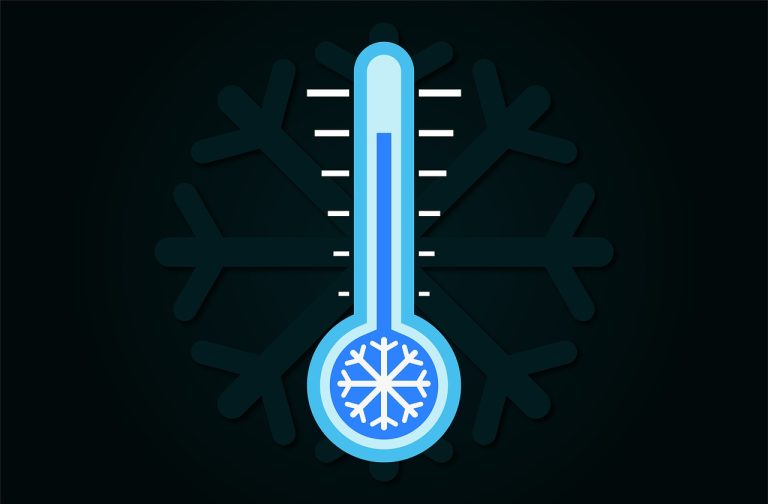Steps for Optimizing Your HVAC System for a Cozy and Sustainable Home
In the quest for a cozy and energy-efficient home, the role of your HVAC system cannot be overstated. This guide explores key strategies to enhance your HVAC system’s efficiency, ensuring optimal comfort and cost savings. Achieving the perfect balance of comfort and efficiency with your HVAC system requires a holistic approach. From regular maintenance to embracing cutting-edge technologies, each step contributes to a more comfortable and sustainable home. By implementing the following strategies, you not only enhance your living space but also contribute to a greener and more energy-conscious future.
Regular HVAC Maintenance Matters
Achieving optimal comfort and energy efficiency in your home is intricately linked to the performance of your Heating, Ventilation, and Air Conditioning (HVAC) system. Regular maintenance is a cornerstone in this pursuit, playing a pivotal role in ensuring the longevity and efficiency of your HVAC system.
HVAC systems, responsible for regulating indoor temperature and air quality, tend to accumulate dust, debris, and wear over time. This accumulation can impede the system’s functionality, leading to reduced efficiency and increased energy consumption. Regular maintenance, including cleaning or replacing filters, checking and lubricating moving parts, and inspecting overall system performance, is essential to keep your HVAC system operating at peak efficiency.
By adhering to a routine maintenance schedule, you not only extend the lifespan of your HVAC equipment but also significantly enhance its energy efficiency. A well-maintained system requires less energy to operate, translating into lower utility bills and reduced environmental impact. Additionally, addressing potential issues promptly during maintenance prevents small problems from escalating into costly repairs or replacements.
Investing time and resources in regular HVAC maintenance is an investment in long-term comfort, cost savings, and environmental sustainability. It ensures that your HVAC system operates smoothly, providing a cozy indoor environment while minimizing its carbon footprint. In the quest for an energy-efficient and comfortable home, regular HVAC maintenance emerges as a proactive and indispensable measure.
Smart Thermostats for Precision Control
Optimizing HVAC efficiency goes beyond routine maintenance; it involves embracing cutting-edge technologies like smart thermostats for precision control. These innovative devices revolutionize the way we manage indoor climate, offering a sophisticated and energy-efficient approach to temperature regulation.
Smart thermostats, equipped with sensors and advanced algorithms, allow homeowners to exercise precise control over their HVAC systems. Unlike traditional thermostats that operate on fixed schedules, smart thermostats adapt to individual preferences and lifestyle patterns. They learn from user behavior, adjusting temperature settings automatically to maximize comfort while minimizing energy consumption.
One of the key features of smart thermostats is their ability to connect to the internet, enabling remote control via smartphones or other smart devices. This remote accessibility empowers homeowners to monitor and adjust their HVAC settings from anywhere, ensuring that energy is not wasted when the home is unoccupied. Some smart thermostats even provide energy usage reports, offering insights into consumption patterns and opportunities for further optimization.
The integration of smart thermostats into HVAC systems introduces a level of efficiency that translates into tangible benefits, both in terms of comfort and cost savings. The precise control offered by these devices not only enhances the overall performance of the HVAC system but also contributes to a more sustainable and eco-friendly living environment. As we navigate the quest for energy efficiency, smart thermostats emerge as a technological cornerstone for achieving precision control and minimizing our carbon footprint.

Sealing the Leaks in Your HVAC System
Addressing HVAC efficiency involves more than just routine maintenance; it requires a holistic approach, including sealing leaks in your HVAC system. Often overlooked, air leaks in ductwork and other components can significantly impact the overall performance of the system, leading to energy waste and decreased efficiency.
Leaky ducts allow conditioned air to escape into unconditioned spaces, such as attics or crawl spaces, and permit unfiltered air to enter the system. This compromises the HVAC system’s ability to maintain the desired indoor temperature efficiently. Sealing these leaks is crucial for preventing energy loss and ensuring that the conditioned air reaches its intended destination.
Duct sealing involves identifying and closing gaps, cracks, or holes in the ductwork. This can be achieved through various methods, including mastic sealant or metallic tapes. By investing in professional duct sealing or undertaking a thorough DIY inspection, homeowners can eliminate these leaks and enhance the efficiency of their HVAC systems.
The benefits of sealing HVAC leaks extend beyond energy efficiency. Improved sealing also contributes to better indoor air quality by preventing the infiltration of dust, allergens, and pollutants from unconditioned spaces. Additionally, sealing leaks reduces the workload on the HVAC system, potentially extending its lifespan and decreasing the likelihood of costly repairs.
In the pursuit of an energy-efficient home, addressing HVAC leaks is a fundamental step. It not only optimizes the system’s performance but also promotes cost savings and environmental sustainability by minimizing energy waste. Sealing the leaks in your HVAC system is a proactive measure that ensures you get the most out of your heating and cooling investments.
Energy-Efficient HVAC Units
Enhancing HVAC efficiency is closely tied to the selection of energy-efficient HVAC units. Modern advancements in heating, ventilation, and air conditioning (HVAC) technologies have given rise to units designed explicitly with energy conservation in mind, offering homeowners a dual benefit of cost savings and reduced environmental impact.
Energy-efficient HVAC units incorporate innovative features such as variable-speed compressors, advanced heat exchangers, and smart sensors. These components work in harmony to optimize performance, adapting to varying conditions and adjusting energy consumption accordingly. Variable-speed compressors, for instance, allow the system to operate at lower speeds during periods of lower demand, minimizing energy usage without compromising comfort.
High Seasonal Energy Efficiency Ratio (SEER) ratings are a hallmark of energy-efficient HVAC units. SEER measures the cooling efficiency of an air conditioner or heat pump over an entire cooling season. Units with higher SEER ratings indicate superior energy efficiency, translating to lower electricity consumption and decreased utility bills.
Furthermore, energy-efficient HVAC units often incorporate programmable thermostats or smart technology, enabling precise control over temperature settings and scheduling. This not only enhances comfort but also ensures that energy is used only when needed, reducing waste during unoccupied periods.
Investing in energy-efficient HVAC units is an investment in long-term cost savings and environmental sustainability. While the upfront costs may be slightly higher, the return on investment manifests through lower utility bills, reduced greenhouse gas emissions, and a more comfortable indoor environment. As homeowners navigate the quest for HVAC efficiency, opting for energy-efficient units emerges as a strategic and environmentally conscious choice.
HVAC Zoning Systems for Personalized Comfort
Maximizing HVAC efficiency involves exploring advanced solutions, and HVAC zoning systems stand out as a key technology for achieving personalized comfort while optimizing energy consumption. Traditional HVAC setups often treat the entire home as a single zone, resulting in uneven heating or cooling and unnecessary energy expenditure. HVAC zoning systems address this challenge by dividing the space into distinct zones, each with independent temperature control.
These systems utilize dampers within the ductwork to regulate airflow to specific zones, allowing occupants to customize temperatures based on their preferences and individual room requirements. This zoning approach not only ensures personalized comfort but also minimizes energy waste by only conditioning the spaces that are in use.
The benefits of HVAC zoning extend beyond comfort and energy savings. Homeowners can strategically allocate resources, directing more conditioned air to frequently occupied areas while minimizing usage in less-used zones. This targeted approach enhances efficiency, as the HVAC system adapts to the specific needs of each zone.
Smart thermostats or zone control systems often accompany HVAC zoning setups, providing users with convenient control options. Through programmable schedules and remote accessibility, occupants can fine-tune temperatures based on daily routines, reducing energy consumption during unoccupied periods.
In the pursuit of a comfortable and energy-efficient home, HVAC zoning systems offer a tailored solution that aligns with modern lifestyle dynamics. By providing occupants with the ability to personalize their indoor environment, these systems contribute to both enhanced comfort and optimized HVAC efficiency, making them a valuable investment for homeowners seeking a more sustainable and customized approach to climate control.
Harnessing Renewable Energy with Your HVAC System
Elevating HVAC efficiency to a sustainable level involves harnessing renewable energy sources, a transformative approach that aligns with environmental responsibility and long-term cost savings. Integrating renewable energy with HVAC systems represents a progressive shift toward greener and more eco-friendly heating and cooling solutions.
One notable method is coupling HVAC systems with solar energy. Solar panels can be installed on rooftops to capture sunlight and convert it into electricity, which can power the HVAC system. This not only reduces reliance on conventional energy sources but also minimizes the carbon footprint associated with HVAC operation.
Geothermal HVAC systems provide another avenue for leveraging renewable energy. By tapping into the stable temperatures beneath the Earth’s surface, geothermal systems can efficiently heat or cool homes with minimal electricity consumption. This approach not only enhances energy efficiency but also offers consistent performance regardless of external weather conditions.
Additionally, wind power can be harnessed to generate electricity for HVAC systems, contributing to a diversified renewable energy strategy. Small-scale wind turbines, especially in areas with favorable wind conditions, can complement traditional power sources and enhance overall HVAC sustainability.
The integration of renewable energy sources with HVAC systems is a forward-thinking strategy that promotes environmental stewardship. While the initial investment may be higher, the long-term benefits include reduced energy bills, lower greenhouse gas emissions, and increased energy independence. As society increasingly emphasizes sustainability, harnessing renewable energy for HVAC needs emerges as a crucial step towards a more environmentally conscious and efficient home.
Programmable HVAC Ventilation Systems
HVAC efficiency takes a leap forward with the implementation of programmable HVAC ventilation systems, offering a dynamic and responsive approach to indoor air quality and energy conservation. Traditional ventilation systems often operate continuously, leading to unnecessary energy consumption. Programmable ventilation systems, however, introduce intelligent controls that adapt ventilation rates based on real-time needs, enhancing efficiency while maintaining optimal indoor air conditions.
These systems employ sensors to monitor factors such as occupancy, humidity, and pollutant levels. By analyzing this data, the programmable ventilation system adjusts ventilation rates accordingly. During periods of low occupancy or when outdoor air quality is poor, the system can reduce ventilation rates to conserve energy. Conversely, during peak occupancy or when pollutants are detected, ventilation rates are increased to ensure a healthy indoor environment.
The integration of programmable features extends beyond real-time adjustments. Homeowners can set customized schedules to align with their daily routines, optimizing ventilation when needed and conserving energy during unoccupied periods. This level of control not only enhances comfort but also contributes to substantial energy savings.
Smart connectivity is often a hallmark of programmable HVAC ventilation systems, allowing users to monitor and control ventilation remotely through smartphones or other devices. This feature promotes user engagement and provides insights into ventilation patterns, empowering homeowners to make informed decisions about indoor air quality and energy usage.
In the quest for HVAC efficiency, programmable ventilation systems emerge as a sophisticated solution that combines personalized control, real-time responsiveness, and energy conservation. By intelligently adapting to varying conditions, these systems represent a pivotal step towards creating healthier, more efficient, and sustainable indoor environments.
Investing in HVAC Air Quality Solutions
Elevating HVAC efficiency encompasses a holistic approach that extends beyond temperature control to prioritize indoor air quality. Investing in HVAC air quality solutions represents a strategic move towards creating a healthier and more comfortable living environment while optimizing energy consumption.
One key aspect of enhancing air quality efficiency is the integration of advanced air filtration systems. High-efficiency particulate air (HEPA) filters, electrostatic filters, or UV-C light systems can be incorporated into HVAC setups to capture and neutralize airborne contaminants, including dust, allergens, and pathogens. By improving air quality, these solutions contribute to a healthier living space and, simultaneously, reduce the strain on the HVAC system by preventing the accumulation of pollutants.
Humidity control is another critical factor in HVAC efficiency and air quality management. Investing in humidification and dehumidification systems helps maintain optimal humidity levels, preventing the growth of mold and mildew while promoting comfort. Balanced humidity also allows the HVAC system to operate more efficiently, reducing the need for excessive heating or cooling.
Smart technologies play a significant role in modern HVAC air quality solutions. Smart thermostats with air quality monitoring capabilities provide real-time insights into indoor conditions, allowing users to make informed decisions about ventilation and filtration. Additionally, air purifiers equipped with smart features can be integrated into HVAC systems, offering seamless control and automation for improved efficiency.
In summary, investing in HVAC air quality solutions is a proactive measure that aligns health and comfort with energy efficiency. By addressing air quality concerns through advanced technologies, homeowners can create a harmonious indoor environment that promotes well-being while optimizing the performance of their HVAC systems.

